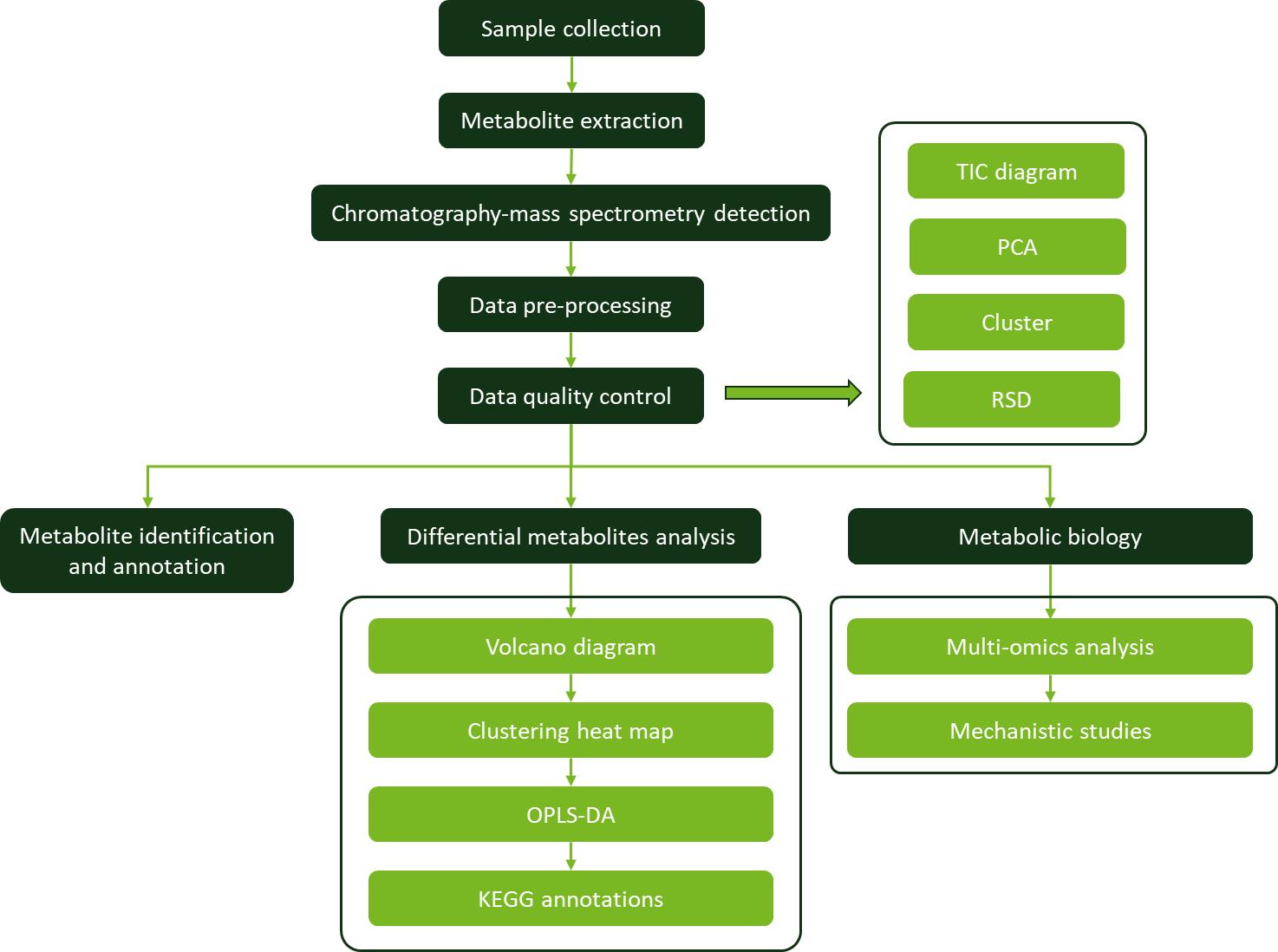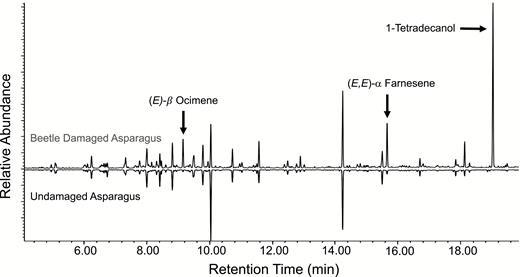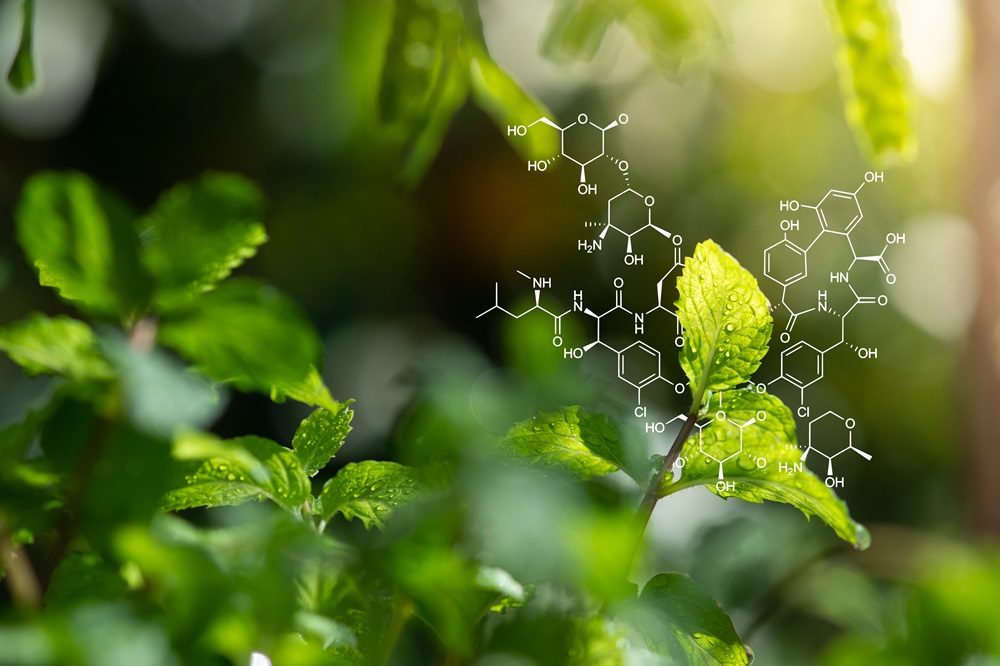What is Farnesene?
Farnesene (C15H24) is a member of the sesquiterpene class, which are terpenes consisting of fifteen carbon atoms. Farnesene exists in multiple isomeric forms, notably α-farnesene and β-farnesene, each with distinct chemical properties and applications. It is produced naturally by various plants and is a component of essential oils. Farnesene is also recognized as an alarm pheromone in aphids and forms part of the natural coating on fruits such as apples.
The analysis of farnesenes is crucial for understanding their role in various industrial applications, including agriculture, fragrance, and pharmaceuticals. Farnesenes, as natural sesquiterpenes, are involved in plant defense mechanisms and attractants. Their precise analysis helps in optimizing their use in crop protection, developing new fragrances, and formulating therapeutic agents.
Farnesene Analysis Services by Creative Proteomics
Farnesene Quantitative Analysis:
- Concentration Measurement: Accurate determination of farnesene levels in various samples to assess its concentration.
- Data Reporting: Detailed reports on the quantification of farnesene, including concentration levels and distribution.
Farnesene Qualitative Analysis:
- Identification: Detection and identification of farnesene and its isomers or related compounds.
- Profiling: Analysis of farnesene’s chemical profile to understand its presence and characteristics in different samples.
Farnesene Stability Testing:
- Long-Term Stability: Evaluation of farnesene's stability over time under various storage conditions to ensure product longevity.
- Degradation Analysis: Monitoring and analysis of potential degradation products that may arise from farnesene during storage or processing.
Comparative Analysis:
- Strain Comparison: Comparative analysis of farnesene content across different plant strains or sources to identify variations in farnesene levels.
- Product Comparison: Evaluation of farnesene concentration and profile across different products or batches to ensure consistency and quality.
Farnesene Metabolomic Analysis:
- Pathway Analysis: Investigation of farnesene's metabolic pathways in various biological systems, offering insights into its biosynthesis and biological roles.
- Biomarker Identification: Identification of potential biomarkers related to farnesene metabolism that can be used in research or clinical studies.
Service Components for farnesene Analysis
Analytical Techniques
Gas Chromatography-Mass Spectrometry (GC-MS):
- Purpose: To identify and quantify farnesene and its isomers in complex mixtures.
- Method: Utilizes a gas chromatograph to separate farnesene from other components, which are then analyzed using mass spectrometry for precise identification.
High-Performance Liquid Chromatography-Mass Spectrometry (HPLC-MS):
- Purpose: To separate and quantify farnesene in liquid samples.
- Method: Employs high-pressure liquid chromatography to isolate farnesene from sample matrices, followed by detection and quantification.
Instrumentation
GC-MS Systems:
- Agilent 7890A GC/5975C MSD
- Thermo Scientific TSQ 8000 GC-MS
HPLC-MS Systems:
- Agilent 6460 Triple Quadrupole LC/MS
- Thermo Scientific Q Exactive Series

The Significance of Farnesene Analysis
The analysis of farnesene is crucial for several reasons:
Importance in Industrial Applications: As a biofuel component, it possesses high octane and cetane numbers, making it a promising alternative to conventional fuels.
Role in Plant-Based Products: Farnesene's presence in essential oils and fruit coatings highlights its importance in flavor and fragrance industries. Its insect-repelling properties also contribute to its use in natural pest control.
Therapeutic Potential: Farnesene's potential therapeutic benefits include anti-inflammatory effects, gut health improvement, anxiety relief, and neuroprotection.
Sample Requirements for Farnesene Analysis
| Sample Types |
Volume/Weight Requirements |
Biological Repeat |
| Plant Samples |
Dried plant tissue |
1-2 g |
3-6 |
| Fresh plant tissue |
5-10 g |
| Soil sample |
10-20 g |
| Liquid Samples |
Pure essential oil |
1-2 mL |
| Oil extract |
2-5 mL |
| Liquid food products (e.g., beverages) |
5-10 mL |
| Specialty Samples |
Blood plasma |
1-2 mL |
| Urine |
5-10 mL |
| Air sample (volatile collection) |
Sufficient to obtain detectable levels |
| Solid food products (e.g., spices) |
1-2 g |
Q: Can you analyze farnesene in complex mixtures, such as essential oils containing multiple terpenes?
A: Yes, we specialize in the analysis of complex mixtures. Our advanced chromatographic techniques, combined with mass spectrometry, allow us to separate and accurately quantify farnesene even in the presence of other terpenes. This ensures that the presence of multiple components in a sample does not interfere with the detection and quantification of farnesene.
Case. Biological Control of Asparagus Pests Using Synthetic Herbivore-Induced Volatiles
Background
The study explores the role of herbivore-induced plant volatiles (HIPVs) in asparagus agroecosystems, specifically in attracting natural enemies to enhance biological control of asparagus pests. HIPVs are chemical cues emitted by plants when they are attacked by herbivores, which can attract predators and parasitoids to the plant. The research focuses on identifying the composition of HIPVs produced by asparagus ferns following herbivore damage and assessing whether synthetic HIPV lures can attract natural enemies and improve pest management.
Samples
The study involved collecting volatiles from three types of asparagus ferns:
- Healthy Asparagus Ferns - No herbivore damage.
- Mechanically Damaged Asparagus Ferns - Physically damaged by removing plant tissue.
- Herbivore-Damaged Asparagus Ferns - Infested with asparagus beetle larvae (Crioceris asparagi L.).
These compounds were tested in various experimental models to assess their anti-inflammatory efficacy.
Technical Methods
HIPV Collection and Analysis:
Volatiles were collected from the headspace of asparagus ferns under various damage conditions.
Compounds were trapped and analyzed using GC-MS.
HIPV Lures:
Synthetic lures containing isolates of ocimene and farnesene were tested in the field.
Lures were placed in commercial asparagus fields to attract natural enemies, with various concentrations and combinations of ocimene and farnesene.
Field tests involved tracking the attraction of pests, predators, and parasitoids using sticky traps.
Effects of Lures on Biological Control:
The performance of the most effective lure (ocimene) was further assessed for its impact on pest control.
Results
Volatile Composition: Asparagus beetle-damaged ferns emitted significantly higher concentrations of (E)-β-ocimene, (E,E)-α-farnesene, and (1)-tetradecanol compared to healthy or mechanically damaged ferns.
Attraction of Natural Enemies: Lures with ocimene and farnesene attracted parasitoids but did not affect predator recruitment. The lures did not significantly increase overall parasitism rates but showed potential in enhancing parasitism of asparagus miners by pteromalids.
Biological Control Impact: Synthetic HIPV lures did not significantly increase biological control of asparagus pests overall. However, specific lures may have some potential to improve parasitism of certain pests under certain conditions.
 Representative GC/MS headspace profiles collected in the field from 1-yr-old asparagus ferns treated with either 20 asparagus beetle larvae, fed ad libitum for 48 h, or an undamaged asparagus plant.
Representative GC/MS headspace profiles collected in the field from 1-yr-old asparagus ferns treated with either 20 asparagus beetle larvae, fed ad libitum for 48 h, or an undamaged asparagus plant.
Reference
- Ingrao, Adam J., Jenna Walters, and Zsofia Szendrei. "Biological control of asparagus pests using synthetic herbivore-induced volatiles."Environmental entomology 48.1 (2019): 202-210.



 Representative GC/MS headspace profiles collected in the field from 1-yr-old asparagus ferns treated with either 20 asparagus beetle larvae, fed ad libitum for 48 h, or an undamaged asparagus plant.
Representative GC/MS headspace profiles collected in the field from 1-yr-old asparagus ferns treated with either 20 asparagus beetle larvae, fed ad libitum for 48 h, or an undamaged asparagus plant.



